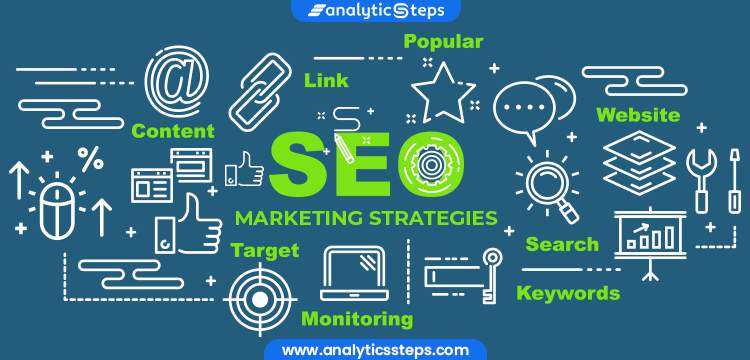[This is a test site and all posts are generated with ChatGPT unless indicated otherwise.]
Search intent is the underlying motivation or purpose behind a user’s online search query. It goes beyond the words typed into a search engine and delves into the intent behind those words. Understanding search intent is crucial for online businesses as it helps align their content, products, and services with what users are actively seeking. By recognizing and catering to search intent, businesses can effectively engage their target audience, enhance user experience, and ultimately drive more conversions.
Commercial search intent specifically focuses on users who are actively looking to make a purchase or engage in a transaction. These are the individuals who have moved beyond the informational stage and are ready to take action. Commercial search queries often include words like “buy,” “best,” “reviews,” or specific product names, signaling a strong intention to make a purchase. By recognizing and catering to commercial search intent, businesses can optimize their marketing strategies, tailor their messaging, and provide the information or products that users are seeking, ultimately increasing their chances of driving sales and revenue.
In this comprehensive guide, we will delve into the concept of commercial search intent, explore its significance for online businesses, and provide practical insights on how to identify and leverage commercial intent to achieve your business goals. Whether you’re an e-commerce entrepreneur, a digital marketer, or a content creator, understanding and harnessing commercial search intent can be a game-changer in today’s highly competitive online landscape.
What is Commercial Search Intent?
Commercial search intent refers to the intention of users who are actively seeking products or services with the purpose of making a purchase or engaging in a transaction. It focuses on individuals who have progressed beyond the informational stage and are now ready to take action. Commercial search queries often contain keywords indicating a strong intent to buy, such as “buy,” “best,” “purchase,” “reviews,” or specific product names.
When users exhibit commercial search intent, they are actively looking for solutions to fulfill their needs or desires, and they are more likely to convert into customers. Recognizing and understanding this intent is crucial for businesses as it allows them to tailor their strategies and provide the information or products that users are actively seeking.

Differentiating Commercial Search Intent from Other Types of Search Intent
- Informational Search Intent: Informational intent focuses on users seeking information or answers to specific questions. These queries often start with terms like “how to,” “what is,” or “why.” Informational intent is geared towards understanding a topic or gaining knowledge rather than making a purchase.
- Navigational Search Intent: Navigational intent involves users who are searching for a specific website or online destination. These queries typically include the name of a brand, company, or website. Users with navigational intent are looking to access a particular website or find specific online resources.
- Transactional Search Intent: Transactional intent is closely related to commercial intent, but it specifically emphasizes the completion of a transaction. Users exhibiting transactional intent are actively seeking to perform an action, such as signing up for a service, subscribing to a newsletter, or registering for an event.
Differentiating commercial search intent from these other types of search intent is essential for businesses to ensure they align their content and strategies with the specific needs and desires of users in the buying stage.
Examples of Commercial Search Queries
- “Best running shoes for women”
- “Buy iPhone 12 Pro Max online”
- “Affordable web hosting services”
- “Top-rated hotels in New York City”
- “Compare Samsung Galaxy S21 vs. iPhone 12”
These examples demonstrate users’ commercial intent by explicitly indicating their intention to purchase or find the best products/services in a specific category. By analyzing such queries, businesses can gain valuable insights into the preferences and requirements of their target audience, allowing them to tailor their offerings and marketing efforts accordingly.
Recognizing commercial search queries helps businesses identify opportunities to present their products or services to potential customers actively seeking to make a purchase, enhancing the chances of conversions and revenue generation.
Impact of Commercial Search Intent on Business Goals
Commercial search intent plays a vital role in achieving various business goals. Understanding and catering to commercial search intent can have the following impacts:
- Increased Conversion Rates: By aligning your content and offerings with the specific needs and desires of users exhibiting commercial intent, you can significantly enhance your conversion rates. Users actively searching for products or services are more likely to convert into customers when they find relevant and persuasive information that meets their needs.
- Enhanced Return on Investment (ROI): Targeting users with commercial intent allows you to optimize your marketing efforts and budget. By focusing on individuals who are more likely to convert, you can maximize the return on your investment by directing your resources towards the most promising opportunities for generating revenue.
- Improved Customer Engagement and Satisfaction: When businesses understand commercial search intent, they can create targeted content and experiences that align with the customer’s journey. By providing the information, solutions, and personalized experiences that users seek, businesses can improve customer engagement and satisfaction, leading to long-term loyalty and positive brand perceptions.
How Understanding Commercial Search Intent Can Improve Conversion Rates
Understanding commercial search intent can have a significant impact on improving conversion rates. Here’s how:
- Tailored Messaging and Content: By recognizing the specific needs and desires of users in the buying stage, businesses can craft tailored messaging and content that directly addresses their concerns, showcases relevant products or services, and highlights the value proposition. This personalization increases the likelihood of capturing users’ attention, building trust, and ultimately driving conversions.
- Optimized Keyword Targeting: Identifying commercial search intent allows businesses to optimize their keyword targeting strategies. By incorporating relevant commercial intent keywords into their content, businesses can attract highly targeted traffic from users actively seeking to make a purchase. This increases the chances of conversion and improves overall search engine visibility.
- Strategic Landing Page Optimization: Understanding commercial search intent enables businesses to optimize their landing pages effectively. By aligning landing page content, design, and calls-to-action with the specific needs and desires of users in the buying stage, businesses can create a seamless and persuasive user experience that encourages conversions.
Case Studies or Examples of Successful Implementations
- Amazon: Amazon excels in understanding commercial search intent by displaying highly relevant product listings and recommendations based on users’ search queries and browsing behavior. Their search algorithm takes into account user intent, delivering accurate and targeted results, leading to increased sales and customer satisfaction.
- Home Depot: Home Depot utilizes commercial search intent by providing in-depth product information, customer reviews, and comparison tools on their website. By understanding that users in the buying stage are looking for detailed specifications and reviews before making a purchase, Home Depot effectively caters to their needs, driving higher conversion rates.
- Sephora: Sephora leverages commercial search intent by offering comprehensive product guides, tutorials, and user-generated content. By recognizing that users are actively searching for product recommendations and tutorials before buying cosmetics, Sephora provides valuable information and establishes itself as a trusted authority, resulting in increased conversions and customer loyalty.
These examples highlight the successful implementation of commercial search intent strategies and how they contribute to the overall success of businesses in terms of driving conversions, customer satisfaction, and revenue growth.
How to identify commercial search intent

1. Keyword Research Techniques for Identifying Commercial Intent
- Commercial Intent Keywords: Look for keywords that explicitly indicate commercial intent, such as “buy,” “best,” “reviews,” “discount,” or specific product names. Incorporate these keywords into your research to identify search queries where users are actively seeking to make a purchase.
- Long-Tail Keyword Analysis: Long-tail keywords often reveal more specific user intent. Analyze long-tail keyword variations that include commercial terms to uncover valuable opportunities to target users in the buying stage.
- Competitor Analysis: Study your competitors’ websites and content to identify keywords they are targeting. If they are successful in the commercial space, it suggests that those keywords have potential commercial intent.
- Customer Surveys and Feedback: Directly reaching out to your customers or conducting surveys can provide insights into their search behaviors and the language they use when actively seeking to make a purchase. Use this information to refine your keyword research and identify commercial intent keywords.
2. Analyzing Search Engine Results Pages (SERPs) for Commercial Intent Signals
- Paid Advertisements: Pay attention to the presence of paid ads on the SERPs. If there are multiple paid advertisements for a specific keyword, it indicates that businesses are actively targeting that keyword for commercial purposes, suggesting commercial search intent.
- Product Listings: Look for product listing ads or organic search results that prominently display product information, prices, and reviews. These results indicate that users are likely searching for specific products, indicating commercial intent.
- E-commerce Platforms: If e-commerce platforms like Amazon, eBay, or Etsy dominate the search results for a particular keyword, it suggests that users are specifically looking to purchase products related to that keyword.
- Review Websites and Comparison Sites: If review websites or comparison sites appear in the search results, it indicates that users are seeking evaluations and comparisons of products or services, further confirming commercial search intent.
Tools and Resources for Identifying Commercial Search Intent
- Google Ads Keyword Planner: This tool provides insights into keyword search volume and competition. Look for keywords with high search volume and a competitive landscape, indicating commercial intent.
- Google Trends: Use Google Trends to analyze the popularity of search queries over time. Look for keywords with a consistently high search volume, suggesting ongoing commercial interest.
- SEMrush: SEMrush offers keyword research and competitive analysis tools. Utilize their keyword magic tool to find relevant commercial intent keywords and analyze competitor strategies.
- Answer the Public: This tool generates a list of questions and queries related to a specific keyword. Look for commercial intent keywords within the generated list to understand user search intent.
- Social Media Listening Tools: Tools like Brandwatch or Hootsuite can help monitor social media conversations related to your industry or products. Look for posts indicating purchase intent or product recommendations.
By utilizing a combination of keyword research techniques, analyzing SERPs, and leveraging specialized tools, you can effectively identify commercial search intent and align your strategies to target users in the buying stage.
Types of commercial search intent
1. Product-Focused Intent
Product-focused intent is characterized by users searching for specific products or categories. They have a clear intention to make a purchase and are actively seeking information about the best options available. Users exhibiting product-focused intent often include words like “best,” “top-rated,” “buy,” or specific product names in their search queries.
- “Best wireless headphones”
- “Buy iPhone 13 Pro Max”
- “Top-rated electric toothbrushes”
Strategies for Targeting Product-Focused Intent
- Optimize product pages: Create detailed and persuasive product descriptions, highlight unique selling points, and provide accurate pricing information to attract users with product-focused intent.
- Include user reviews: Incorporate authentic user reviews and ratings to build trust and showcase social proof.
- Implement schema markup: Use schema markup to provide search engines with structured data about your products, making it easier for search engines to display relevant product information in search results.
2. Comparison-Focused Intent
Comparison-focused intent involves users who are actively comparing different products or services. They want to evaluate the pros and cons, features, and prices of various options before making a decision. Users exhibiting comparison-focused intent often include keywords like “vs.,” “comparison,” or “best” in their search queries.
- “iPhone 13 Pro Max vs. Samsung Galaxy S21 Ultra”
- “Best laptop for graphic design”
- “Comparison of DSLR cameras”
Strategies for Targeting Comparison-Focused Intent
- Create comprehensive comparison guides: Develop detailed and objective comparison guides that highlight the key features, benefits, and differences between competing products or services.
- Use comparison tables: Present information in a visually appealing and easily scannable format using comparison tables to help users quickly understand and compare different options.
- Showcase customer testimonials: Incorporate customer testimonials and case studies that demonstrate the benefits and outcomes of choosing your product/service over competitors.
3. Review-Focused Intent
Review-focused intent is characterized by users seeking in-depth reviews and evaluations of products or brands. They want to gather information about the quality, performance, and overall customer satisfaction before making a purchase decision. Users exhibiting review-focused intent often include keywords like “review,” “reliable,” or “best” in their search queries.
- “iPhone 13 Pro Max review”
- “Is XYZ brand reliable?”
- “Best budget-friendly vacuum cleaner”
Strategies for Targeting Review-Focused Intent
- Create detailed product reviews: Craft comprehensive and unbiased reviews that provide valuable insights into the features, performance, and user experiences of the products or brands in question.
- Encourage user-generated content: Prompt customers to leave reviews and ratings on your website or third-party review platforms, as this can enhance credibility and provide authentic user perspectives.
- Engage with online communities: Participate in relevant forums, social media groups, or review websites to address user questions, provide insights, and establish your brand as a trusted source of information.
4. Purchase-Focused Intent
Purchase-focused intent refers to users who have made a decision and are actively looking for the best place to make a purchase or find deals and discounts. They are ready to convert and want to find the most convenient and reliable options to complete their transaction. Users exhibiting purchase-focused intent often include keywords like “buy,” “purchase,” “discount,” or specific purchase-related terms in their search queries.
- “Buy Nike Air Max shoes online”
- “Discount codes for XYZ website”
- “Where to purchase concert tickets”
Strategies for Targeting Purchase-Focused Intent
- Optimize for local search: If applicable, ensure your business is listed in local directories, utilize location-based keywords, and provide clear information on how and where users can purchase your products or services locally.
- Offer discounts and promotions: Promote special offers, discounts, or exclusive deals to incentivize users with purchase-focused intent to choose your product/service over competitors.
- Streamline the purchasing process: Ensure your website has a user-friendly and intuitive checkout process with multiple payment options, clear shipping information, and transparent return policies to encourage conversions.
By understanding the different types of commercial search intent and implementing appropriate strategies, businesses can effectively target and engage users at various stages of the buying process, ultimately increasing the likelihood of conversions and driving revenue growth.
Optimizing content for commercial search intent
1. Creating Compelling Product Descriptions and Landing Pages
- Unique Selling Proposition (USP): Clearly communicate the unique value and benefits of your product or service in your product descriptions and landing pages. Highlight what sets you apart from competitors and why users should choose your offering.
- Persuasive Language: Use persuasive language that appeals to users’ emotions and addresses their pain points. Focus on the positive outcomes and benefits they can expect from using your product or service.
- Visual Elements: Include high-quality images, videos, and interactive elements to showcase your product or service from different angles and provide a more immersive experience. Visuals can help users better understand the features and benefits of your offering.
2. Incorporating Relevant Keywords and Phrases
- Keyword Research: Conduct thorough keyword research to identify relevant commercial intent keywords. Incorporate these keywords naturally into your content, including headings, subheadings, and body text.
- Long-Tail Keywords: Target long-tail keywords that are more specific and have lower competition. These keywords often indicate higher purchase intent and can help you attract more qualified leads.
- On-Page Optimization: Optimize meta tags, URL structures, and image alt tags with relevant keywords to improve your visibility in search engine results pages (SERPs).

3. Enhancing User Experience and Providing Valuable Information
- Clear and Intuitive Navigation: Ensure your website has a user-friendly navigation structure that makes it easy for users to find the products or information they are looking for. Use clear category names and logical hierarchy to guide users through their journey.
- Relevant and Detailed Information: Provide comprehensive and accurate information about your products or services. Include specifications, dimensions, pricing, availability, and any other relevant details that users may need to make an informed decision.
- Easy-to-Read Formatting: Use headings, bullet points, and short paragraphs to break up your content and make it easier to scan. Highlight key features, benefits, and important information to ensure it stands out.
4. Leveraging Customer Reviews and Testimonials
- Display Reviews and Ratings: Showcase customer reviews and ratings on your product pages to build trust and credibility. Positive reviews and high ratings can help alleviate any concerns potential customers may have.
- Testimonial Integration: Incorporate customer testimonials throughout your website, including landing pages and checkout pages. Testimonials provide social proof and demonstrate the positive experiences of previous customers.
- Interactive Reviews: Consider implementing features that allow users to leave reviews or ask questions directly on your website. This engagement not only helps with search engine optimization but also encourages user-generated content and customer engagement.

By optimizing your content for commercial search intent, you can effectively engage and convert users who are actively seeking products or services. Remember to continuously monitor and analyze the performance of your optimized content to make necessary adjustments and improvements over time.
Measuring success and iterating for commercial search intent
1. Tracking Key Performance Indicators (KPIs)
- Conversion Rate: Measure the percentage of website visitors who complete a desired action, such as making a purchase, submitting a lead form, or subscribing to a newsletter. This metric directly reflects the success of your efforts in targeting commercial search intent.
- Click-Through Rate (CTR): Track the percentage of users who click on your website’s search engine listings or advertisements. A high CTR indicates that your content is compelling and relevant to users with commercial intent.
- Average Order Value (AOV): Monitor the average value of each transaction to understand the monetary impact of users with commercial intent. Increasing the AOV indicates that users are more likely to make larger purchases, leading to higher revenue.
- Conversion Funnel Progression: Analyze how users progress through the conversion funnel, from initial search queries to final purchases. Identify potential drop-off points and optimize your content and user experience to improve conversion rates.
2. Analyzing User Behavior and Engagement Metrics
- Bounce Rate: Assess the percentage of users who leave your website after viewing a single page. A high bounce rate may indicate that your content does not align with users’ commercial search intent or fails to engage them effectively.
- Time on Page: Measure the average time users spend on your landing pages and product pages. A longer time on page suggests that users are actively engaging with the content, potentially indicating a higher likelihood of conversion.
- Page Views per Session: Track the average number of pages users visit during a single session on your website. Higher page views per session suggest that users are exploring multiple offerings, indicating a deeper interest in making a purchase.
- Exit Pages: Identify the pages where users commonly exit your website. Analyze the content and user experience on those pages to determine if there are any barriers or shortcomings that may discourage users from converting.
3. Iterative Improvements Based on Data Analysis
- A/B Testing: Conduct A/B tests to compare different versions of your landing pages, product descriptions, or checkout processes. Analyze the data to identify which variations perform better in terms of conversion rates and engagement metrics.
- User Feedback and Surveys: Gather feedback from users who have interacted with your website and made purchases. Conduct surveys or interviews to understand their experiences, pain points, and suggestions for improvement.
- Heatmaps and User Recordings: Use heatmaps and user recordings to visualize how users interact with your website. Identify areas of interest, scrolling patterns, and potential usability issues that may impact conversion rates.
- Conversion Funnel Analysis: Analyze the data at each stage of the conversion funnel to identify bottlenecks or areas for optimization. Make data-driven adjustments to your content, messaging, and user experience to improve the overall conversion rate.
Regularly analyze the collected data, draw insights, and make iterative improvements to your content and user experience. By continuously refining your strategies based on data analysis, you can enhance the effectiveness of your efforts in targeting commercial search intent and drive better results for your business.
Remember that measuring success and iterating is an ongoing process. Stay updated with the latest trends, user behavior patterns, and industry best practices to ensure that your optimization efforts remain effective and aligned with evolving customer needs.
Increasing Conversions With Commercial Search Intent
Understanding and catering to commercial search intent is crucial for online businesses. By aligning your content and strategies with the specific needs and intentions of users who are ready to make a purchase, you can significantly impact your business goals, improve conversion rates, and drive revenue growth.
Optimizing for commercial search intent involves creating compelling product descriptions, incorporating relevant keywords, enhancing user experience, leveraging customer reviews, and continuously analyzing data to make iterative improvements. By implementing these strategies, you can effectively engage and convert users at various stages of the buying process.
As you navigate the ever-evolving digital landscape, it’s crucial to adapt and prioritize commercial search intent strategies. Continuously monitor your performance metrics, analyze user behavior, and make data-driven adjustments to optimize your content and user experience. By embracing commercial search intent, you can stay ahead of the competition and drive success for your online business.
Remember, commercial search intent is a dynamic aspect of digital marketing. Stay attuned to changes in user behavior, search trends, and industry developments to ensure your strategies remain relevant and effective. By consistently implementing commercial search intent strategies, you can maximize your chances of connecting with and converting users with high purchase intent.





